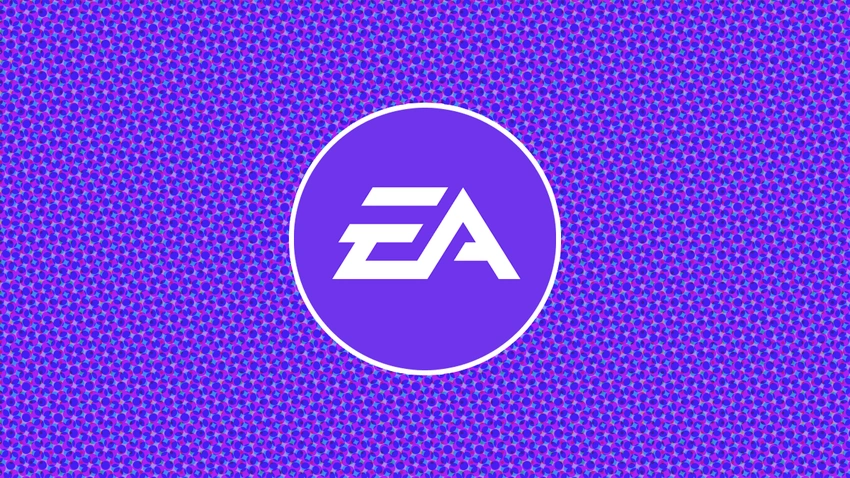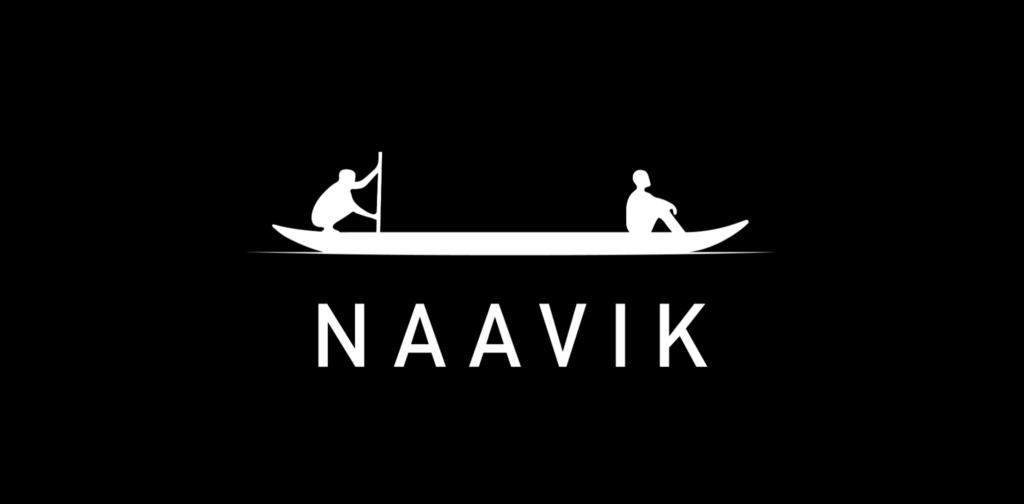Hi Everyone. Thanks for tuning in for another week of Naavik Digest. If you missed last Wednesday’s edition, we wrote about Epic Games’ foray into web3 games via the Epic Game Store. Let’s dive into today’s issue…
This Week on The Metacast
Rise of The Mega-Investors: Tencent & Savvy Gaming Group — In this Metacast episode, Aaron Bush, Anil Das-Gupta and Lars Doucet join Maria Gillies to discuss the rise of Mega-Investors, and what the strategy might be behind companies like Savvy Gaming Group and Tencent. The group also discusses why Supercell has sunset yet another game, and what we can take away from the recent news of Stadia’s shutdown.
You can find us on YouTube, Spotify, Apple Podcasts, Google Podcasts, YouTube, our website, or anywhere else you listen to podcasts. Also, remember to shoot us any questions here.
#1: Horizon Raises a $40M Series A
Earlier this week, Horizon Blockchain Games announced they raised a $40 million Series A at an undisclosed valuation from a group of investors led by Brevan Howard Digital and Morgan Creek Digital. The round also included gaming strategics like Take-Two Interactive and Ubisoft, notable VCs such as BITKRAFT and Initialized Capital, web3 companies such as Polygon and Everyrealm, and influential web3 founders such as Sebastien Borget (The Sandbox) and Aleks Larsen (Sky Mavis). Horizon previously raised $4.5M in 2021 at an $89.5M valuation.
Founded in 2018, the company is a leading web3 consumer infrastructure and game development company. The founders are known for co-authoring the ERC-1155 standard (more on that later) and are headlined by a CEO with 15 years of founding experience, as well as an ex-McKinsey CFO. The team of 60 is attempting to build the long-term go-to solution for consumer onboarding into web3 through its three separate vehicles, including Sequence (an all-in-one developer platform), Skyweaver (a blockchain-trading card game), and Niftyswap (a decentralized digital asset marketplace). Ultimately, while Horizon operates across infrastructure and game development, it’s the infrastructure piece via Sequence that long-term presents the most upside to onboard millions of consumers into crypto and the area where they’ll likely double down.
This piece will explore each of Horizon’s products, and how they fit into the company’s broader ecosystem. I believe the team’s strategy of driving consumer adoption through a tentpole game like Skyweaver and developer adoption through infrastructure tools like Niftyswap and Sequence makes for a valuable roadmap to build toward Series B-level traction.
What Is Sequence?
At its core, Sequence is a ETH-focused developer platform and smart wallet. The platform includes a variety of tools like:
- Token + NFT APIs for all EVM compatible chains
- An out of the box protocol that powers custom-built NFT Marketplaces
- SDK Offerings that can be used with Unity, Unreal Engine, and Mobile platforms
The platform’s non-custodial wallet also offers mutli-sig, credit + debit, and log-in recovery support. Sufficient to say, the platform itself is entirely centered on making crypto-onboarding as seamless as possible.
Early data has shown promise for the platform, with integrations across several emerging L2s (Optimism, Polygon etc.) as well as integrations with core IP like Cool Cats, Community Gaming and nearly 40 others. One such implementation, DAZN Boxing, even noted that 80% of its Sequence wallet users are new to crypto. While adoption has slowed pace to only 1-2K new users per day, all-time highs were around 10K+ in early July. In total, 682K Sequence wallets have facilitated over 3.4M total transactions since inception.
Looking ahead, UX and ease of onboarding will be paramount to wallet adoption; in contrast with the comparatively friction-laden process that comes with other wallets like Metamask (and considering its 21 million monthly active userbase), it’s not difficult to see the potential upside that Sequence presents. It has a massive opportunity to become the tools and wallet of choice for millions of consumers onboarding into web3 and crypto.
How Skyweaver Works
One of the more successful consumer applications that has integrated Sequence tools so far is Horizon’s own Skyweaver. Skyweaver is a F2P trading card game similar in style to Hearthstone use blockchain tech to focus on player ownership, verifiable card scarcity, and a card trading marketplace. The game has exploded in adoption from 60K users in the private beta to over 300K users since the open beta launched in February 2022. Skyweaver has earned rave reviews, with Token Gamer calling it “the best blockchain game so far.” Let’s dive into how the game works.
Skyweaver Gameplay | Source: Horizon
Each user is given a “hero” and a deck of cards with the goal to attack and outlast the opponent’s hero. Players build decks around two of the six “Prisms” (strength, agility, wisdom, heart, intellect), characteristics that influence their core hero and deck composition. Cards also have elemental affinities, which can impact various facets of the game. For example, light and earth are generally good at healing while fire is generally good at damaging heroes.
Each card in Skyweaver is an “SFT” or “semi fungible token”; in other words, there is a limited supply of identical items (i.e. cards of certain attributes) as opposed to a “one-of-one” unique NFTs. It’s important to understand the three tiers of different cards (SFTs) and how they function in the Skyweaver ecosystem:
- Base: These cards cannot be exchanged, traded or sold. They have no intrinsic value, but can be played in all game modes.
- Silver: They can be traded, sold or gifted to friends. They’re slightly more valuable than Base cards, and can be used to enter special combat modes in the game instead of paying the entrance fee.
- Gold: The “trophy” cards of the game. Gold cards are shiny and very apparent on the battlefield. They can only be won through combat in “Conquest mode”, and are only minted once.
These three levels of cards facilitate Skyweaver’s unique economic design through “free-to-own” consumer onboarding (via the Base cards) while still maintaining value in the economy with a limited supply of tradable rare and desirable cards (via the Silver and Gold Cards).
In this way, Skyweaver employs a unique and intriguing economic design optimized for the traditional trading card player. Instead of a native token, its economy is entirely run through USDC and supply and demand of its NFT cards allows users to decide how many additional cards are created. Much like Sequence, Skyweaver is designed to minimize jargon and mechanics that would hinder adoption, instead opting to focus on simple design to minimize speculation. The move is largely reflect in its user base as well, with over 60% of the game’s players being first time crypto users.
Fitting in the Third Pillar, Niftyswap
Perhaps in an effort to build their own killer use case, Skyweaver is also powered by its own Sequence-powered marketplace, Niftyswap. The platform is designed with ERC-1155s and SFTs in mind, allowing for users to buy and sell in-game items while still maintain scarcity in an economically viable way.
Horizon’s Niftyswap powers trading activity within Skyweaver among other games | Source: Horizon
Niftyswap has accounted for 147K transactions and $4.1M in total trading volume for Skyweaver alone and also provides liquidity pools for top projects such as Illuvium, Galaxy Fight Club, The Sandbox, and many others. Decentralized NFT and SFT marketplaces have been growing in popularity, and Niftyswap is likely to face competition given the the rapid ascent of Sudoswap and Magic Eden’s support for Genopets SFTs. I do believe Niftyswap has an inherent advantage in that it has already proven the ability to directly integrate the marketplace into games, as Skyweaver players need not exit gameplay to buy or sell items.
In stark contrast to industry fluctuations seen in centralized marketplace Opensea’s 99% volume crash from its May 1st peak, Skyweaver’s stable liquidity over time (as seen below) indicates a healthy community both in Skyweaver’s userbase and the liquidity providers on the Niftyswap platform.
Skyweaver liquidity on Niftyswap has been relatively stable YTD | Source: Dune Analytics
Why Raise Now?
This Series A raise enables Horizon to double down on its Sequence platform and supercharge developer relationships for better consumer adoption. For example, there’s potential for the Sequence wallet and tooling to be embedded into the largest consumer apps. It’s clear that Horizon has identified infrastructure-level pain points for consumers that currently limit adoption and this raise will directly enable Sequence — and the developers Sequence supports — to address them.
Beyond its core infrastructure product in Sequence, the fundraise will also also Horizon to grow its own consumer app in Skyweaver. Horizon will attempt to increase awareness through content (they already are regular streamers on Twitch), grow community through tournaments, build out additional card sets like their recent “clash of investors” release, and integrate gaming guilds and build out spectator mode. Increased adoption of Skyweaver will in turn directly drive Niftyswap marketplace usage. Horizon can also devote resources into the platform supporting SFTs from other web3 games as well.
The fact that the round was oversubscribed during bearish moments of the industry speaks to the conviction that investors have in the team and product — and rightfully so. The innovative team’s dedication to a seamless consumer experience is clearly reflected across each of its dev tools, game, and marketplace and Horizon finds themselves in an only more favorable positioning after raising from such a dynamic group of individuals and investors. (Written by Will Moore)
#2: Legal & Regulatory Considerations in Web3 Gaming (Pt. 1)
This the first part of an article written by Amy Madison, an investment partner at DIGITAL. This piece, which focuses on Money Transmitters and Convertible Virtual Currencies originally appeared here.
- “How can you design if you don’t know what the consequences of your decisions are? Creating something without any outcome in mind is not design but experimentation.” — Virtual Economies: Design and Analysis
With high reward comes high risk. As the global gaming industry balloons to $336B in 2021, and web3 gaming exploding over 2,000% as the fastest-growing category, it’s easy for developers and investors who wish to enter this lucrative market to forget that timeless adage. Web3 gaming in particular comes with its own landmines, especially in the legal and regulatory department. I’ve developed this multi-chapter primer as your key to decoding the regulatory bodies that could dash your dreams of becoming (or funding) the next Sky Mavis or Web3 Epic Games. The name of the web3 development game: maximizing reward while minimizing risk.
The largest pain point for blockchain gaming is regulatory uncertainty. Not only do existing issues such as IP, consumer protection, and gambling applicable to traditional games remain in effect, but web3 games have additional challenges around convertible virtual currencies: NFTs, money transmission, and securities laws. Moreover, all of this is taking place against the background of still-nebulous regulations surrounding cryptocurrency in general. With the consequences of getting it wrong for developers ranging from fines to criminal charges, it is more important than ever to understand the legal landscape.
In this piece, we’ll explore how gaming is approaching the complex world of virtual currencies. This starts with the legal regulations and requirements for money transmitters, including AML and KYC, but also extends well beyond into considerations at both the federal and state level. We’ll also look to understand how some of the industry’s most successful companies have leveraged strategies to mitigate legal risk and just how important it is developers to analyze game mechanics for potential regulatory impact.
Games increasingly permeate all aspects of society, beyond entertainment, facilitating social engagements and financial transactions. As the industry continues its rapid evolution, I hope these chapters will inspire more conversations and critical analysis by bringing to light some of the challenges that investors and builders in this space should think about.
🎮In Other News…
💸Funding & Acquisitions:
- Fandom acquired several gaming media companies, including Metacritic and Gamespot. Link
- Horizon raised a $40M Series A. Link
📊Business:
- Sony plans to make 2M PSVR2 headsets by Q1 next year. Link
- Mythical Games launched a token, DAO, and foundation. Link
- AppLovin launched an NFT marketplace. Link
- CD PROJKET Group presented their long-term strategy. Link
🕹Culture & Games:
- Nintendo + Illumination Studios revealed the first trailer for the Mario movie. Link
- Everdale is ending development. Link
- Overwatch 2 got hit with DDOS attacks. Link
👾Miscellaneous Musings:
- How to integrate game trailers into marketing materials. Link
- Cloud gaming, post-mortem. Link
- A spotlight on speedrunning Ocarina of Time. Link
🔥Featured Jobs
- Legendary Play: Senior System & Economy Designer (Remote)
- Bungie: Director of Product Management (Remote — US)
- Guerrilla Games: Technical Animation Manager (Amsterdam, Netherlands)
- Manticore: Head of HR and Recruiting (Remote)
- Naavik: Content Contributor (Remote)
- Naavik: Games Industry Consultant (Remote)














